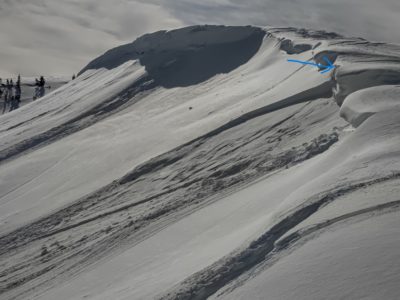Basic Information
Observation Details
Observation Date:
February 6, 2022Submitted:
February 6, 2022Observer:
SAC - Bret RasmussenZone or Region:
Island ParkLocation:
Lion Head Ridge @ Airplane BowlSigns of Unstable Snow
Recent Avalanches?
YesCracking?
IsolatedCollapsing?
IsolatedSnow Stability
Stability Rating:
Very GoodConfidence in Rating:
HighStability Trend:
SteadyBottom Line
Generally, the snowpack is very strong. I'm finding facetted layers near the ground in shallow snowpack areas and widespread near surface facets along with buried surface hoar layers in the top of 10 to 20 inches of the snowpack. Additionally, there are isolated wind loaded slopes causing wind slabs on top of this extremely weak and fragile layer. For now, we don't have widespread areas with heavy loading, so the hazard risk is relatively low. On longer slopes, perhaps with additional cross loading caused by changing wind directions in recent days, a thin layer of snow releasing from a large area can create a big enough pile of snow to bury a rider and could be deadly if this occurred in a terrain trap.
Media/Attachments
Advanced Information
Weather Summary
Cloud Cover:
Partly CloudyTemperature:
25fWind:
Moderate , WNew/Recent Snowfall:
HN 2"- 3"There is up to a 12" of light density snow available for transport with enough wind speed to cause drifting.
Avalanche Observations
| # | Date | Location | Size | Type | Bed Sfc | Depth | Trigger | Comments | Photo |
|---|---|---|---|---|---|---|---|---|---|
| 1 |
Lion Head Ridge at Airplane Bowl E 9500 |
D1 | C | I-New/Old Interface | 10" |
AM-Snowmobile u-Unintentional |
Today I watched as a sledder dropped a cornice causing the cornice to fall triggering an avalanche chasing him down the hill. The snowpack consisted of a wind slab on top of near surface facets and a couple buried layers of surface hoar. |

|




